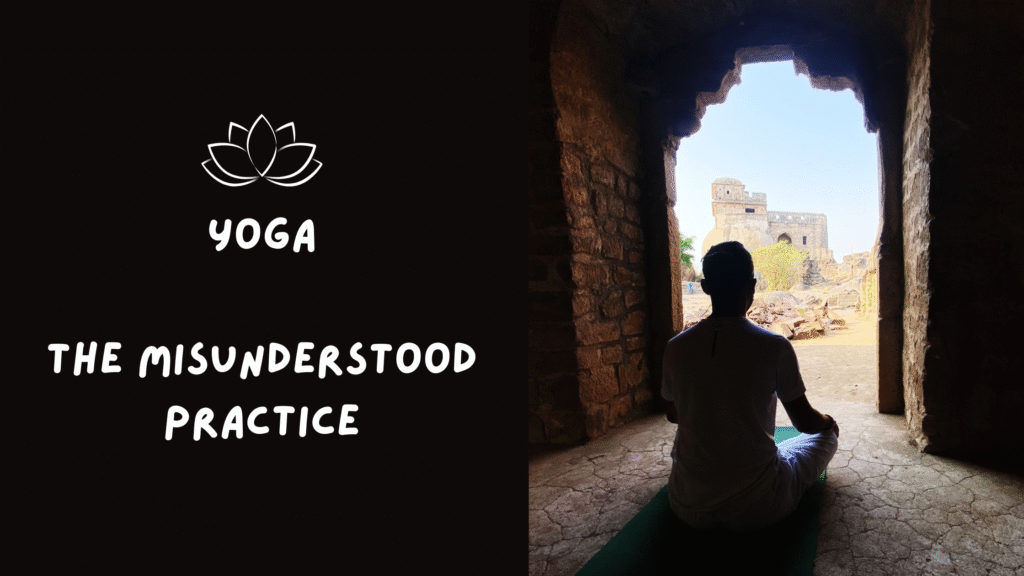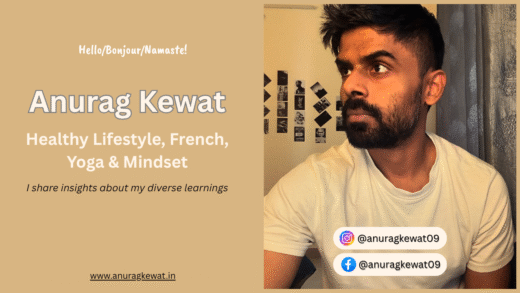When most people hear the word “Yoga,” they picture someone bending into a pose or stretching on a mat. But Yoga is far more than a physical workout — it’s a way of life that helps us connect with ourselves on a deeper level.

So, What Is Yoga, really?
Yoga is an ancient practice that brings together the body, mind, and spirit. It was systematised by the sage Maharishi Patanjali in the Yoga Sutras, a collection of 196 short verses written over 2,000 years ago. In one of its most famous lines, Patanjali defines Yoga as:
“Yogas chitta vritti nirodha” — Yoga is the stilling of the fluctuations of the mind.
In simpler terms, Yoga helps us quiet the constant stream of thoughts that often overwhelm us. It’s not about forcing the mind to be silent, but about learning to observe our thoughts without getting caught up in them. This creates space for clarity, peace, and presence.
The Purpose of Yoga
The ultimate goal of Yoga is not just physical flexibility or strength — it’s inner freedom. Through consistent practice, we begin to understand ourselves better, respond to life more calmly, and live with greater awareness. At its highest level, Yoga leads to a state called Samadhi — a deep sense of liberation and contentment, where the highs and lows of life no longer control us.
But you don’t need to be a monk or a mystic to benefit from Yoga. Even small steps — like mindful breathing or a few minutes of stillness — can bring meaningful change.
For a detailed article, check out – Asana practice is not Yoga
The 8 Limbs of Yoga
To make this path more accessible, Patanjali outlined the 8 limbs of Yoga — a framework that guides us toward a balanced and meaningful life. These include:
- Yama: The first limb of Yoga focuses on practising certain principles that concern our environment.
- Niyama: (Ni + Yama) The second limb of Yoga focuses on codes of conduct at a personal level, encompassing our duties towards ourselves, which in turn affect not only our individual well-being but also our actions that impact the world around us.
- Asana: This simply means, “seat”. The practice in order to be able to sit comfortably, & still without any uneasiness for the practice of meditation.
- Pranayama: “Prana” + “Yama”, to gain control over our mind by regulating our breath.
- Pratyahara: It’s the practice of withdrawal of the senses in order to focus inwards and gain inner awareness.
- Dharana: Concentration – Practice controlling your mind by binding it to a single object to develop mental clarity and focus.
- Dhyana: Meditation, where the mind remains focused for a long period of time.
- Samadhi: A liberated state where one detaches oneself from the pains and pleasures of life.
While many people begin with Asana (the physical practice), the other limbs are equally important in cultivating a holistic Yoga practice.
Common Misconceptions About Yoga
Despite its growing popularity, Yoga is still misunderstood in many ways. Let’s clear up a few common myths:
You need to be flexible to do Yoga
This is probably the most widespread myth. Flexibility is not a requirement — it’s a result. Saying you’re too stiff for Yoga is like saying you’re too dirty to take a shower. Yoga meets you where you are.
Yoga is just stretching
While Yoga includes physical postures, it’s not just about movement. It’s about awareness of your breath, your body, and your thoughts. The physical practice is just one part of a much deeper system.
Yoga is too slow or boring
There are many styles of Yoga — some are gentle and meditative, others are fast-paced and physically intense. Whether you’re looking for calm or challenge, there’s a style that fits.
Yoga is only for women or spiritual people
Yoga is for everyone, regardless of gender, age, background, or belief. It’s a universal practice that supports physical health, mental clarity, and emotional balance.
Yoga will solve all your problems
Yoga is not a magic cure. It’s a tool — one that helps you build resilience, awareness, and inner strength. It won’t eliminate life’s challenges, but it can help you face them with more grace.
In Conclusion
If we treat it as just a workout, it’s not the full picture. But if we approach it with awareness, intention, and understanding, it becomes a doorway into something much deeper.
Yoga is not about touching your toes — it’s about what you learn on the way down.
If this article helped shift your perspective, I invite you to stay connected.
Namaste.
For a more detailed introduction to Yoga, check out this article.
Connect with me on LinkedIn !



Recent Comments